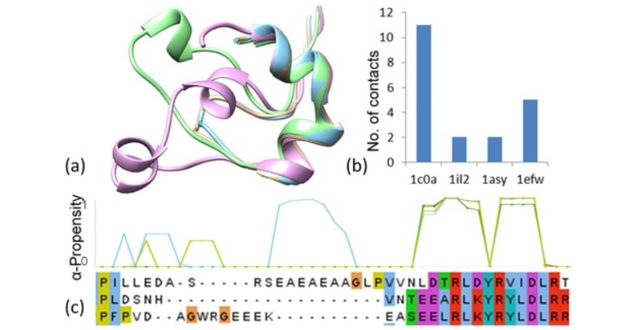Aspartyl tRNA synthetase (AspRS), one of the 20 aminoacyl-tRNA synthetases, plays an important role in protein synthesis by catalyzing the aminoacylation reaction and synthesises Aspartyl-tRNA (tRNAAsp). A typical three-dimensional structure of AspRS comprises three distinct domains for the recognition of cognate tRNA and catalysis, namely, anti-codon binding domain/N-terminal domain, hinge domain and catalytic domain through their interactions with anti-codon loop, D-stem and acceptor arm of cognate tRNA, respectively. In this work, we have studied the structural characteristics of each domain of AspRS to understand the recognition mechanism of tRNAAsp using molecular dynamics simulations. The dynamics of AspRS-tRNAAsp complexes from E.coli (cognate and non-cognate), S.cerevisiae (cognate) and T.thermophilus (non-cognate) were compared to understand the differences in recognition of cognate and non-cognate tRNAs. Our results explain that the conformational changes associated with the recognition of tRNA occur only in the cognate complexes. Among the cognate complexes, the conformational changes in yeast AspRS are highly controlled during tRNAAsp recognition than that of in the E. coli AspRS. Moreover, the functional motions required for the tRNA recognition are observed only in the cognate complexes, and the conformational changes in AspRS and their recognition of tRNAAsp are organism specific.

【論文】Molecular dynamics simulations of cognate and non-cognate AspRS-tRNAAsp complexes
WRHIからのお知らせ おすすめ
スマート創薬研究ユニット 関嶋正和准教授とMichael Gromiha特任教授の共著論文
“Molecular dynamics simulations of cognate and non-cognate AspRS-tRNAAsp complexes”
が、J Biomol Struct Dyn. にオンライン掲載されました。(DOI: https://doi.org/10.1080/07391102.2019.1711188 )
詳しくはこちら
<Abstract>
